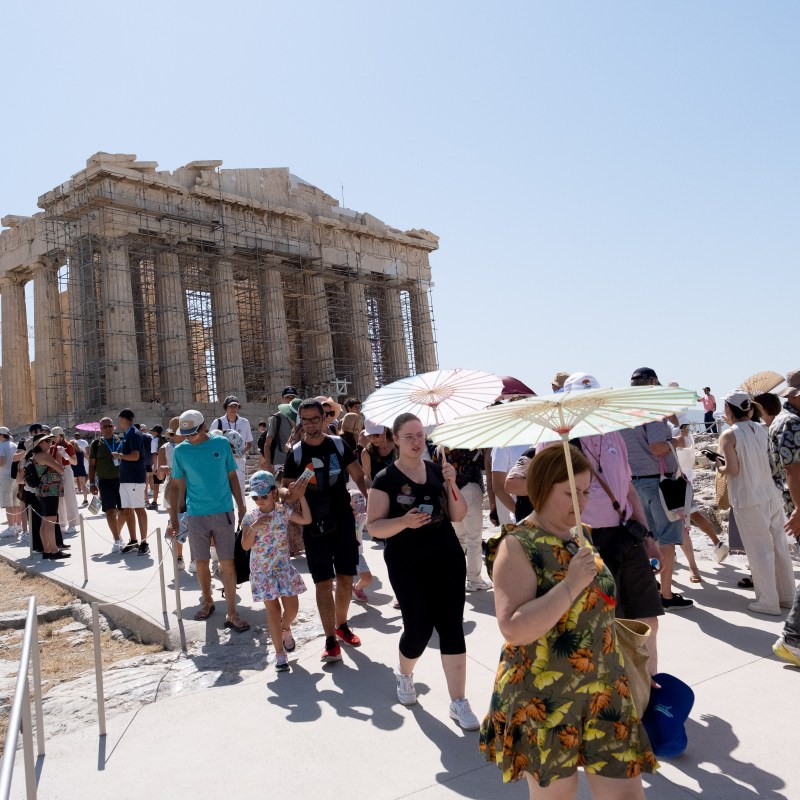
Greece is in the grip of a serious heat wave, which is being exacerbated by domestic wildlife and blazes over in Turkey.
Videos by TravelAwaits
In July, temperatures in Athens usually hover between 25-33 °C or around 77-92 °F. That’s a pretty hefty range that shifts when the sun rises or sets, and most tourists are braced for the sweltering summer temperatures. Americans, in particular, also seek out heat-beating products and tips, especially considering the dubious nature of AC.
But visitors to the Greek Islands this year have been facing a heat wave that’s hit in the 40s °C, which is between 104-124 °F.
That’s a pretty staggering temperature for tourists to manage, especially considering many of Greece’s great archaeological sites are in the open air.
It’s especially concerning considering the second-most dangerous tourist destination in the world, California’s Death Valley, hovers around 49 °C or 120 °F.
Tourists warned about the heat wave, especially at outdoor sites
Starting July 28, 2025, authorities in Southeastern Europe are raising the alarm over a heat wave, which took hold days earlier. It’s exacerbated by wildfires occurring in Greece and Turkey, the latter of which just recorded its hottest-ever temperature.
Authorities in Greece are also tasked with keeping thousands of tourists safe. In fact, Athens’ Acropolis was recently shut down when temperatures rose over 40°C or 104 °F. Over the last months, temperatures have repeatedly peaked above that number, rising even to 44 °C in Athens in June.
However, the heat wave isn’t expected to last long. Many temperatures, especially in the Balkans, have returned to normal levels. It’s expected that temperatures in Greece will return to between 30-35 °C or 86-95 °F later this week.
In addition to high temperatures, wildfires also pose additional risks to tourists. Some areas have been evacuated, including hotels and resorts. Other areas are instead suffering from poor air quality, as ash and smoke from fires cause serious airborne pollution.
